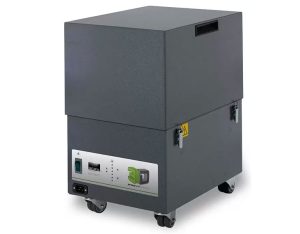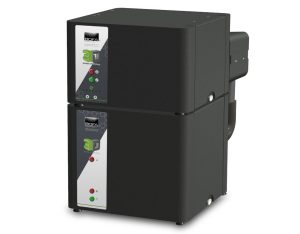How filtration innovation is helping drive demand for 3D printable functional materials

The cost, customisation and supply chain benefits of additive manufacturing (AM) are spawning a new generation of functional materials, helping to accelerate and broaden industry adoption of 3D printing.
Where AM was once the preserve of prototyping and high-tech sectors, innovation in 3D print machine speed, accuracy and capability is now upscaling the industry for mass market production. Printer manufacturers and materials technology businesses are extending operations and market offerings to support production of finished parts, notably through processes such as vat polymerisation, material extrusion and powder bed fusion.
At the same time, global supply chain issues are focusing attention on local production capability. As a result, investment in 3D print systems for both end products and to facilitate other manufacturing processes – by the printing of injection moulds for example – is on the up.
From automotive gear shift logos to trainer soles, sports equipment to mascara brushes, the world of 3D print is rapidly evolving…and the driving demand for functional materials with precise physical properties, whether strength, fire retardation, flexibility, scratch-resistance etc…all within strict tolerances.
Whether new resins or polymer resins, polymer filaments or metal and polymer powders, materials providers are working closely with end customers (manufacturers) and 3D print technology providers to develop new formulations fit for purpose.
Increasingly, these new generation functional materials require increasingly high temperature 3D print environments to create the desired result. However, as referenced in recent research into 3D emissions undertaken by BOFA, combining chemicals, resins and powders at high temperatures isn’t without challenges.
The research showed that the higher the temperatures required by the material’s properties, the greater the likelihood for both off-gassing, which can be toxic and smelly, and increased particulate.

BOFA is now established in partnerships with 3D print equipment manufacturers, materials providers and end users to develop the filtration systems that enable the application of new generation functional materials by maintaining optimal chamber operating conditions and contributing to a safe working environment. This involves the application of BOFA’s in-house scientific expertise to identify emissions resulting from specific materials and processes and developing a filtration system linked to the resultant gases, particles or fume.
For example, BOFA has re-designed its 3D PrintPRO 4 technology to include more advanced multi-stage gas filtration, including a deeper carbon bed to filter a greater volume of fume. This helps extend filter life and helps create safer, odourless print operations. The redesign includes a larger HEPA filter, enabling multiple 3D printers to be hooked up to a single BOFA unit, thereby optimising investment in filtration technology to support effective atmosphere management and help prevent the build-up of particulate residue within the print chamber.

BOFA has also developed a new 3D PrintPRO HT system specifically to meet growing industry demand for filtration at high temperatures. The new technology uses advanced electronics components, thermal insulation and innovative air management to deliver high levels of filtration performance in high temperature chamber environments.
It’s clear that the growing adoption of functional materials by 3D print equipment providers and product manufacturers is transforming the AM landscape globally…and BOFA is at the forefront of filtration system design enabling this transition.


